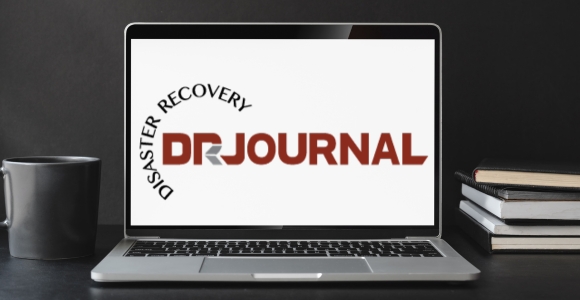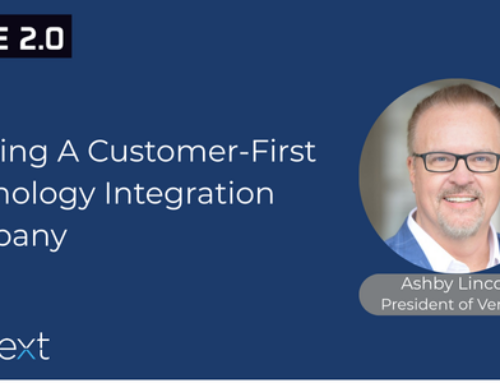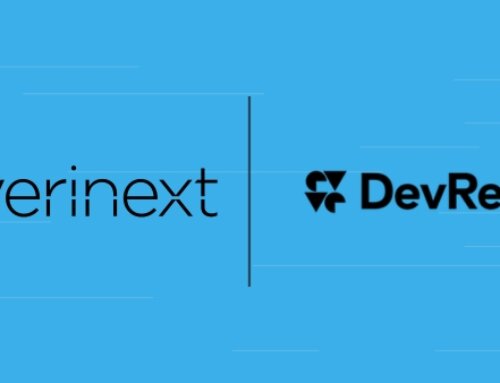The following article on DRaaS appeared in Disaster Recovery Journal on August 28, 2024, written by Verinext’s Nick Martino. Read the original article here.
In 1999, one of the most infamous cyberattacks, back before Y2k and the advent of cybersecurity as we knew it, happened. The NASA and the US Department of Defense computer systems were brought to the ground for three-weeks in a total shutdown, causing a blackout of all NASA’s computers between the United States NASA headquarters, the International Space Station, and arguably more severely, the Pentagon weapons computer system. A 15-year-old Florida teen, operating out of his parent’s house, opened the door to intercept emails, steal passwords and play in the International Space Station’s data records while nearing United States weapon secrets. While it is still up for debate what the teen planned to do with the information, it created a much-needed conversation around cybersecurity and disaster recovery. Fast forward 25 years, and this conversation is still a hot topic.
Today, the focus is on preventing a cyberattack and mitigating the damage if, or more realistically, when something happens. During the 1999 cyberattack, NASA didn’t have a proper recovery plan, which resulted in almost a month of offline systems. The offline systems hindered the country and the world’s ability to communicate with the International Space Station’s residents and our nation’s weapon security fail-safes. Keeping organizational information safe is obviously the first line of defense, but what happens when the worst happens?
Cyber security is a bit like building a squirrel-proof bird feeder. Current methods may work for a while, but no feeder is ever secure forever. You must constantly make improvements while holding onto a backup plan if the critter makes it to your bird seed before the next upgrade. This said, it takes much more than a roll of duct tape to keep all the good stuff inside. Traditional Disaster Recovery (DR) absorbs an enormous amount of time, energy and budget, and yet when push comes to shove, it often fails to deliver on the promise of data recovery. This is where Disaster Recovery-as-a-Service (DRaaS) steps in.
Understanding DRaaS
Disaster Recovery-as-a-Service (DRaaS) is a public or private cloud-based service model that enables businesses to back up their data and IT infrastructure in a third-party cloud computing environment. Today, the priority trifecta revolves around threat mitigation, compliance and reducing downtime and losses. DRaaS works to provide a comprehensive disaster recovery plan that includes backup, replication and failover capabilities, ensuring minimal downtime and data loss during disruptive events.
The Trifecta
There are more than three concerns or considerations when digging into disaster recovery solutions, but of the plethora, they all trace back to these three main ideas:
Mitigating Cyber Threats: Cyberattacks, particularly ransomware, have become increasingly sophisticated and frequent. According to a report by Veeam, 85% of organizations experienced at least one ransomware attack in the past year. Businesses today want help to mitigate the impact of such attacks by providing secure, immutable backups that are resistant to alteration by attackers.
Ensuring Compliance: With evolving data protection regulations like GDPR and CCPA, organizations today must ensure their data recovery plans comply with legal requirements. The key is to invest in a solution designed to be flexible and adaptive, helping businesses stay compliant with the latest and future regulations.
Reducing Downtime and Financial Losses: Nine times out of ten, data-related disruptions lead to significant financial losses, customer trust issues and/or reputational damage. Recent research from IDC indicates that 93% of organizations faced data-related disruptions in the past year, yet only 29% felt confident in their disaster recovery solutions, hence the hunt for the latest and greatest security solution.
While more complex than a roll of duct tape for a bird feeder, your disaster recovery solution does not have to absorb countless hours and resources. DRaaS has come out of the woodwork to meet the needs of the trifecta without bankrupting your business.
7 Ways DRaaS Can Support Your Business
- Reduce Time and Effort: DR can be an exceptionally time-consuming task. Proper DR maintenance takes IT operations days or weeks to backup, often struggling to automate without hiccups. DRaaS eliminates the need to babysit recurring backups by deploying a DR site as a mirror image of the corporate data center or refreshing expensive equipment (in-house and at the DR site) every few years.
- Lower Costs: Many organizations face high DR hardware, software, and services costs. With budget constraints, DR spending has decreased across the board. Cloud storage offers an alternative but often fails during disasters. Managed DRaaS eliminates upfront costs and maintenance, providing comprehensive DR for a monthly fee. This model reduces IT management expenses and avoids significant capital expenditure, ensuring effective disaster recovery without the high costs of traditional methods.
- Frequent and Efficient Testing: Testing is a DR best practice. But it is not always executed successfully. Many only test annually, while some organizations neglect it entirely, leaving backup plans inadequate or even forgotten. A managed DRaaS ensures effective and timely recovery with regular testing and validation. It provides evidence of testing, including application and scenario-based tests, without burdening internal staff. This continuous testing guarantees preparedness and efficient recovery.
- Ultra-Low Recovery Point Objective: The Recovery Point Objective (RPO) measures the maximum acceptable data loss in a disaster. For instance, if a disaster strikes at 8 a.m. and the last backup happens at midnight, the RPO is eight hours, meaning minimal data loss. However, if the latest backup was a week ago, the RPO could be days, resulting in significant data loss. Organizations use techniques like snapshots to reduce their RPOs, sometimes narrowing it down to an hour. However, lower RPOs increase costs, making them challenging for many businesses to achieve. A managed DRaaS offers near-instant RPOs, ensuring minimal data loss and quick recovery, even during severe disruptions like security breaches or power outages.
- Ultra Low Recovery Time Objective: Recovery Time Objective (RTO) measures the time between an outage and recovery. Like RPO, lower RTOs increase costs. Organizations often reserve low RTOs for mission-critical systems, meaning some systems recover fast while others take days. Managed DRaaS offers affordable, low RTOs for all data and applications, making comprehensive, quick recovery accessible to everyone.
- Disaster Recovery Ready: Disasters used to be incredibly rare and mostly natural disasters, such as hurricanes or floods. Often, organizations gambled on avoiding a disaster, barely investing in disaster recovery. Today, disasters are more frequent and not only weather-related. Modern IT needs comprehensive DR protection. Managed DRaaS offers broad, effective coverage, enabling rapid recovery for both SMBs lacking resources and large companies focusing IT on strategic initiatives. DRaaS also includes advanced security features, with continuous monitoring for threats by trained personnel, ensuring robust protection and quick recovery.
- Multi-Cloud Protection: Modern organizations now have workloads on-premises, in the cloud and in hybrid scenarios. Their infrastructure is more complex than ever. DRaaS simplifies the complexity of the process by transferring responsibility to an external provider, meaning businesses only need to verify all data is covered, freeing up internal resources and ensuring comprehensive data protection.
Since the invention of the computer, data protection has been a must. The transition in protection has come as a direct result of weather and threat-based disasters. More than ever, preparing for the worst is not a luxury but a necessity. As a response to transitioning needs, DR has found a new niche as DRaaS. It has become a front-runner as a comprehensive, cost-effective solution for businesses of all sizes to protect their data, ensure compliance and maintain operational continuity. By incorporating the latest technologies and best practices, DRaaS can save your business from almost any squirrel on a mission, including 15-year-old hackers with the genius to take down the US Department of Defense.
Related Post:
3 Steps to Use Data Classification to Elevate Your Security Posture
Operational Resilience: Implementing Robust OT Security in Critical Infrastructure






